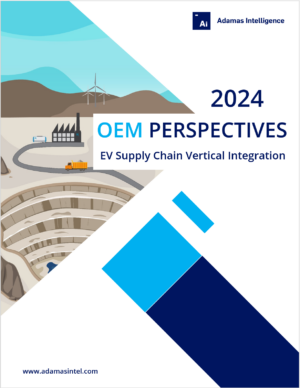Advanced air mobility to help lift global NdFeB demand to new heights
From a nascent demand category today led by recreational, and to a lesser extent commercial, drones, we forecast that advanced air mobility will grow to become one of the largest NdFeB demand drivers by 2040, led by rapidly growing production of electric vertical-takeoff-and-landing (“eVTOL”) aircraft for transportation and delivery sectors.

From a nascent demand category today to one of the largest NdFeB demand drivers by 2040
From a nascent demand category today led by recreational, and to a lesser extent commercial, drones, we forecast that advanced air mobility will grow to become one of the largest NdFeB demand drivers by 2040, led by rapidly growing production of electric vertical-takeoff-and-landing (“eVTOL”) aircraft for transportation and delivery sectors.
Compared to using Uber, the value proposition is extremely compelling
According to McKinsey, 2022 saw more than 2,000 commercial drone deliveries take place daily across the globe. According to Gartner, global retail deliveries by drones will top 1 million per annum by 2026 and in the next decade that number will increase by orders of magnitude.
Moreover, according to Adam Goldstein, cofounder of Archer, a leading developer of eVTOL aircraft in the U.S., air-taxi flights could soon cost from $3 to $4 per mile in the U.S., similar to fares if using Uber Black. Factor in that a 15-mile trip from Los Angeles to Santa Monica, which could take an hour of driving in traffic, would take just eight minutes in an eVTOL and the value proposition is extremely compelling.
By as early as next year, eVTOL maker Joby and airline Delta are hoping to launch commercial flights in New York and Los Angeles while Archer and United plan to do the same in Chicago.

With torque density of utmost importance to eVTOL motors, it stands to reason that permanent magnet motors, likely axial flux, will dominate the market going forward
However, our research indicates that post-2030 eVTOL and other advanced air mobility applications will be competing with robotics, electric vehicles, wind power generators, consumer electronics and hundreds of other applications of NdFeB magnets for increasingly limited magnet supplies.
With torque density of utmost importance to eVTOL motors, it stands to reason that permanent magnet motors, likely axial flux, will dominate the market going forward. Moreover, if magnetically coupled gearboxes (also known as magnetically geared motors) pervade, the eVTOL industry’s need for sustainable, growing NdFeB supplies will literally soar, beyond our own projections herein.
In any eventuality, it’s clear that advanced air mobility, and eVTOL in particular, is poised to become one of the largest NdFeB end-use categories in the next decade, helping lift global demand to towering new heights.
For more info on the outlook for rare earths, NdFeB magnets, advanced air mobility, and much more, refer to our latest Rare Earth Magnet Market Outlook to 2040 report.






